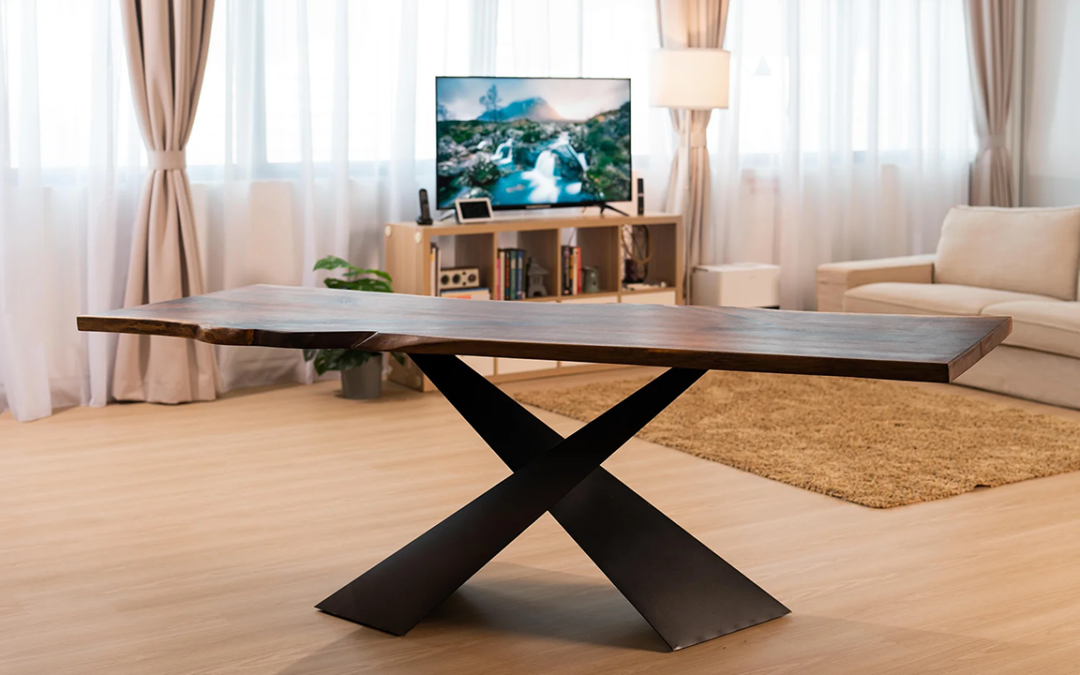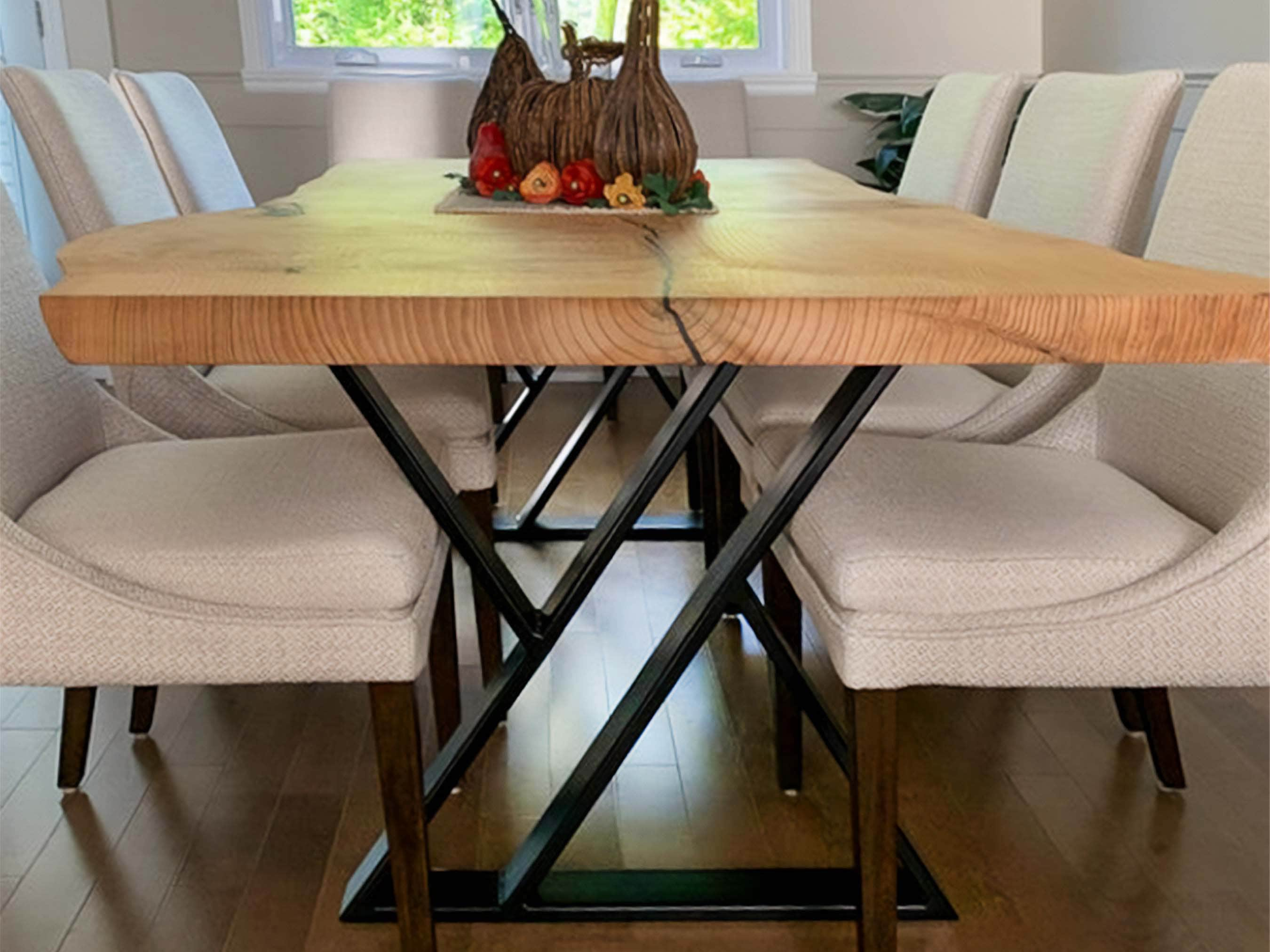Update Your Furnishings with Fashionable Dining Room Table Legs
Update Your Furnishings with Fashionable Dining Room Table Legs
Blog Article
A Thorough Check Out Eating Table Leg Styles: Locating the Suitable Match
Picking the ideal eating table leg style is important for both aesthetic allure and functional functionality. For those with bigger tables, trestle legs make sure strong support, whereas barrette legs present a mid-century modern-day vibe with their minimalist layout. The x-shaped legs blend modern style with boosted stability.
Typical 4 Legs
Among the various types of eating table leg designs, the typical four-leg design remains an ageless option for lots of houses. This timeless configuration offers a harmonious blend of performance and appearances, making it a seasonal fave. 4 legs give well balanced assistance, ensuring the table remains stable and capable of birthing significant weight. This is specifically advantageous for households that frequently organize huge celebrations or use their table for several functions, such as job or crafting.
From a visual perspective, the traditional four-leg layout can be conveniently adapted to various indoor designs. Whether crafted from wood, steel, or a mix of materials, these legs can be delicately sculpted, smooth and minimalistic, or anything in between. Their versatility permits them to match both rustic and contemporary setups effortlessly.
Furthermore, the straightforward framework of the four-leg design facilitates convenience of motion and positioning within a space. Unlike more complicated bases, this style decreases obstructions, providing adequate legroom for diners. In recap, the conventional four-leg eating table leg style weds withstanding style with functional functionality, making it a sharp choice for those looking for both form and function in their eating furniture.
Stand Base
Commonly commemorated for its stylish and space-efficient layout, the stand base is a distinguished option to the standard four-leg arrangement in eating table leg styles. Without corner legs, diners are paid for higher flexibility of motion, making it an ideal choice for round and oval tables that promote even more intimate and comprehensive celebrations.
Moreover, the pedestal base's central support can deal with substantial weight, enabling for the use of much heavier tabletops, such as marble or thick hardwood. This stamina combined with its aesthetic flexibility makes the pedestal base a popular choice in both conventional and contemporary interior setups. It can seamlessly incorporate with numerous layout motifs, from traditional sophistication to minimalist modernity. Additionally, the central column itself provides a canvas for intricate designs and imaginative expressions, including an aspect of visual interest beneath the table. In recap, the pedestal base combines capability with design, making it a fine-tuned and useful option for varied dining settings.
Trestle Legs
Trestle legs supply a robust and classic foundation for eating tables, defined by their straight cross-bracing and durable assistance beam of lights. Stemming from medieval times, this layout has advanced yet kept its essential structure, making it a seasonal favorite in both typical and contemporary settings. The central trestle beam of light, often supported by two or more upright articles, offers phenomenal security, enabling larger table sizes without the need for extra legs.
A significant advantage of trestle leg tables is the ample legroom they use. Unlike tables with 4 corner legs, the absence of blockages at the table's sides provides unobstructed room for chairs and diners, improving convenience and accessibility. This makes trestle tables suitable for accommodating larger celebrations, whether in a dining-room or a banquet hall.
From rustic farmhouse to sleek modern designs, trestle legs can be customized to fit private preferences. Their long-lasting charm and practical benefits make trestle legs a compelling option for those seeking both design and usefulness in their here are the findings eating table.
Barrette Legs

The appeal of barrette legs depends on their simplicity and convenience - dining room table legs. Available in a series of materials, including steel and brass, they can be ended up in numerous colors to match various indoor styles. Whether coupled with a rustic wood tabletop or a contemporary glass surface area, hairpin legs effortlessly blend functionality with a touch navigate to this website of vintage beauty
Resilience is one more significant attribute of barrette legs. Despite their delicate look, these legs are crafted to birth significant weight, ensuring the table remains secure and secure. Additionally, they are fairly very easy to set up, making them a prominent selection for do it yourself fanatics and expert furniture makers alike.
X-Shaped Legs

Created from products such as steel, wood, or a mix of both, X-shaped legs can be customized to match different design preferences. Steel legs frequently provide a streamlined and commercial feeling, perfect for loft-style apartments and modern dining areas.
Additionally, the engineering behind X-shaped legs makes certain also weight distribution, reducing the risk of wobbling and improving longevity. This makes them especially fit for bigger table that call for extra support. Essentially, X-shaped legs blend useful engineering with modern appearances, making them a timeless option for varied dining atmospheres.
Conclusion
An extensive understanding of eating table leg designs exposes the unique characteristics and benefits of each design. Trestle legs ensure durable support for larger tables, and barrette legs introduce a mid-century modern-day aesthetic.
Report this page